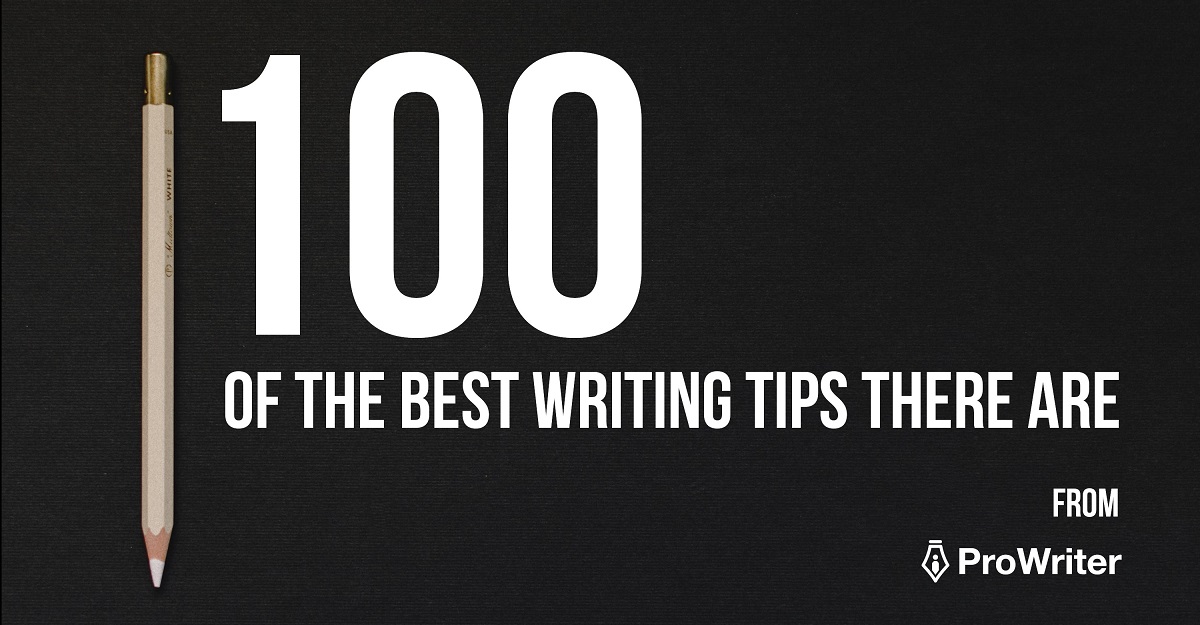Freelance writers need to make the right moves in their first year to set themselves up for a long, rewarding career.
In our experience as freelance writers and, later, the employers who hire them, these 5 things make the biggest impact on a writer’s long-term success.
The day you decide you want to try and make money as a writer kick-starts a whirlwind 12-18 months that treats most writers like a kite in a hurricane.
Just in case you think I’m picking on you, I’m putting myself in that group, too. I had no idea what I was doing. I wrote free articles for a short-lived local Nashville music paper nobody read, thinking somehow someone at Gannett Media would notice me and give me a prestigious column somewhere. And if they could do it sooner rather than later, that would be great. The rent is due.
It didn’t happen. Instead, I waited tables and wrote tons of “trending news” content for various sites, worked 10-12 hours a day, every day, and eventually, gave up for a normie 9-5 desk job.
Sure, I kept up with some freelancing on the side and eventually found my footing, but at that time in history, 12-18 months in, a success story in the industry I was not. And that’s because at that time, in my early 20s and fresh out of college, I didn’t know what I didn’t know.
This is not an uncommon story for freelance writers. Recent data on the market is pretty bleak, with a majority of freelancers making less than $10,000 a year and very few who make it to year three without giving up.
Still, it is possible to claw your way to the top tier, make a good living, and not one that requires 80 hours a week to accomplish.
But how?
We’ve written at length about how hard it is to find good information on becoming successful in freelance writing. There are hundreds of millions of articles about freelance writing online, but how many of them are really, truly helpful?
What if you don’t want tips on building your own website, or vague advice like “just sit down and write!” How do you start making money now, and, what things do you need to do in that first year to keep your earnings increasing into year two and beyond?
In my experience as a writer, and more importantly, someone who eventually made a career out of hiring them, here are 5 tips that, if I could go back in time to that Nashville-based waiter/wannabe writer, I’d give him.
He did find his feet eventually. But he could have done it a lot sooner, and made many fewer mistakes.
If you’re considering a career in freelance writing or are stuck in your first year, I hope these tips help you as well.
In this post we’ll cover:
- Why your portfolio is your career’s secret weapon
- Securing recurring work from satisfied clients
- Complimentary skills to develop and how
Let’s go!
No. 1: Use your real name
I do not know what it is about a pen name that is so alluring. I think maybe it just makes you feel more like a writer.
Of course it doesn’t actually make you more of a writer. And it might unintentionally hurt your career.
Let me explain.
As someone who has spent a good chunk of their career in this space hiring writers for various projects in every conceivable vertical (for publishers, for brands, for marketing campaigns, you name it), I can’t tell you how many times I’ve received an application from someone I couldn’t verify.
This means, they send me a pitch on their services, but I can’t find them anywhere else online.
This application always ends up in the trash.
Employers don’t have the time to roll the dice and take a chance on someone who can’t provide proof of concept. We’ll get into how your portfolio plays into this later on, but first and foremost, be a real person with a digital footprint. Not having that in this day and age is a red flag.
Now you might have good reason to not want to be published under your real name. That’s fine. But don’t conceal who you are from the person hiring you. Once you get the job you can let them know your byline preferences.
But on that note…
No. 2: Get bylined work early
A lot of newbie freelance writers get stuck in low-pay ghostwriting work early on.
It might not be right, but it’s normal. I can’t change the game, but I can help you play.
One of the best ways to break out of this part of the market is to seek bylined work as soon as possible.
Ask current clients for bylined opportunities (the worst they can do is say “no”), submit to sites that allow for an author byline, and if worst comes to worst, self-publish a bunch of content on Medium or elsewhere that looks a lot like the kind of writing you want to make a career out of.
Slowly but surely you’ll build up your clips.
[click_to_tweet tweet=”Ask current clients for bylined opportunities. The worst they can do is say ‘no.’ #writingtip #writingcommunity” quote=”Ask current clients for bylined opportunities. The worst they can do is say ‘no.'”]
From an employer perspective, ghostwriting clips aren’t worth much, especially for higher-paying gigs. You only need to hire a writer who stole good ghostwritten clips from someone else once. Thereafter, you’ll always be skeptical of writers who can only provide ghostwritten content.
Believe me, this happens a lot, and it drags the whole industry down.
If you’re committed to publishing under a pen name, just make sure you get bylined consistently with that pen name. Those still wouldn’t be preferred clips for me personally, but it’s better than the alternative.
No. 3: Strategically build a portfolio
I cannot stress enough the importance of a writer portfolio. We take this so seriously at ProWriter that we built one that writers can use for free.
Your portfolio is not a museum where you hang trophies. It is the most important tool you have. It’s more important than a good pitch. It’s more important than nailing an interview.
Employers get bombarded with hundreds of applications, and most of them are from writers who are not qualified for the gig. So these employers, busy with their other responsibilities, have to optimize how they work through applications. And for the most part, the portfolio is the first place they start.
They need proof of concept. They need to see you can write.
Will any ‘ol portfolio do? No. I’ve seen hundreds of applications with links to Google Drives and Dropbox folders containing Microsoft Word documents that are articles the applicant supposedly wrote for some client.
How can I, as an employer, know that this is something the applicant wrote, or that a client even accepted and used it?
I can’t.
It’s much better if I can see something published somewhere under your name. If a client of yours liked your content enough to publish it with your name on it, you must be the real deal. Even self-publishing on Medium shows me something a Dropbox link doesn’t. It’s not easy to just rip off someone’s writing and put it up online somewhere, especially with how sophisticated plagiarism checkers are getting.
Your portfolio is key to your success, and every link you can put in it with your name on it is a building block in the fortress of your career. Find bylines jobs, do a great job with anything with your name on it, and get a portfolio to show it all off. It makes it easier for employers and it makes you look a lot more professional.
No. 4: Make the ask
The number one thing writers can do early to start building a steady, recurring client base is this: when a job is done, ask for more work.
That’s it.
Don’t say “let me know if you ever need a writer again.” Say, “do you have another job you need my help on?” Don’t split the difference and hope they call you. Get a “yes” or a “no” (a “let me poke around and email you in a week” is fine too).
This is not an obnoxious thing to do. You’re not putting your client out by asking for more work.
[click_to_tweet tweet=”‘The number one thing writers can do early to start building a steady, recurring client base is this: when a job is done, ask for more work.’ #writingtip #writercommunity” quote=”The number one thing writers can do early to star building a steady, recurring client base is this: when a job is done, ask for more work.”]
Let me tell you a few things from the employer side of this point:
- Whenever, whenever, a writer has asked me for more work, as long as I was happy with the work they did, I either found something for them to do or passed them on to someone who needed a writer.
- Whenever, whenever, a writer has said “keep me in mind for future jobs,” even if I was happy with the work they did, I forgot all about them.
- Out of hundreds of writers I’ve worked with in my career, I can name the ones who consistently ask me directly for more work on one hand. ONE. HAND. And I always go to them first. That means just asking is a HUGE advantage.
Yes, you will hear a lot of “no.” But “no” doesn’t kill you. Just move on, keep asking, you will hear “yes” enough to build a client list.
No. 5: Seek out complimentary gigs
On any number of jobs boards you’ll see part-time gigs for things like “part-time editor” or “communications/marketing intern” or something. While these jobs might not be your dream gigs, I highly recommend a few months in as many different content production roles as possible.
Writing tweets as an unpaid intern for 10 hours a week right now doesn’t sound that exciting, and writing press releases for small companies might sound pretty dull too, but these are good gigs to cut your teeth on early in case a better (paid) opportunity comes up later.
A part-time editor position should be paid and I can’t recommend it highly enough. Learning content production from that side of the table will make you a better writer a lot faster than your competitors.
Final thoughts
There’s no changing the fact that the first year for many freelance writers is a slog.
But don’t get stuck in a rut. Use that time to flatten your learning curve and you’ll be ahead of 90% of the market.
Most importantly of all, do good work. Especially if your name is on it.
If you don’t have a writer portfolio, you can set one up through ProWriter for free here. If you’re looking for your first gigs, you can check out our jobs board or follow us on Twitter where we post writing gigs daily.
Happy hunting!






